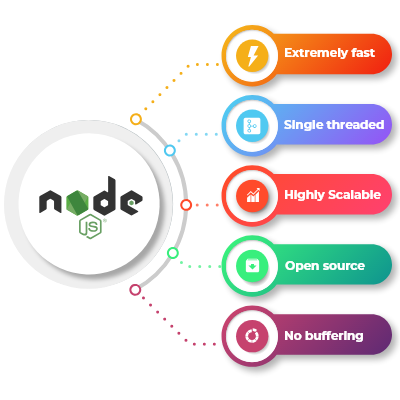Pulse of Information
Stay updated with the latest news and insights.
Node.js: Where Coffee Meets Code
Discover how Node.js brews powerful web apps! Join us for tips, tricks, and insights where coffee meets code. Dive in now!
Understanding Node.js: The Basics of JavaScript Runtime
Node.js is a powerful JavaScript runtime that allows developers to execute JavaScript code outside of a web browser. Built on the V8 engine from Google Chrome, Node.js enables server-side scripting, promoting a unified language for both client and server applications. This unique architecture utilizes an event-driven, non-blocking I/O model, which makes it lightweight and efficient, particularly suitable for building scalable network applications. Understanding the fundamentals of Node.js is essential for anyone looking to harness the full potential of modern web development.
At its core, Node.js operates on a single-threaded event loop, allowing it to handle multiple connections simultaneously without the overhead of traditional multithreading. This design is a game-changer for I/O-heavy operations, such as database queries or API calls. As a developer, grasping the basics of Node.js means appreciating how it deviates from conventional web server paradigms. Key concepts like asynchronous programming, callbacks, and promises are fundamental to efficiently managing operations in Node.js. By mastering these principles, you can create highly responsive applications that can gracefully scale as demand increases.

10 Tips for Optimizing Your Node.js Applications
Optimizing your Node.js applications is essential for enhancing performance and ensuring that your application can handle numerous concurrent connections. Here are 10 tips to help you achieve that:
- Ensure efficient use of memory by utilizing streaming data instead of loading it all into memory at once.
- Minimize the use of synchronous APIs to avoid blocking the event loop. Always aim for asynchronous code.
- Leverage caching mechanisms like Redis or in-memory caching to store frequently accessed data, reducing the load on your database.
- Utilize built-in tools like Node.js clustering to capitalize on multi-core systems by creating multiple instances of your application.
- Monitor application performance using tools such as PM2 or New Relic to identify bottlenecks effectively.
Additionally, implementing code optimization techniques is crucial for maintaining performance. Regularly review your code for redundancies and consider modularizing your application for better maintainability. Here are more tips:
- Use the latest LTS version of Node.js to take advantage of performance improvements and security updates.
- Optimize your database queries by using appropriate indices and avoiding unnecessary data fetches.
- Regularly audit your dependencies to ensure that you are using up-to-date and efficient packages.
- Implement load balancing techniques to distribute traffic evenly across your application servers.
- Lastly, leverage tools like Webpack or Rollup to bundle and minify your JavaScript, improving load times.
What Makes Node.js Ideal for Real-Time Web Applications?
Node.js is particularly well-suited for real-time web applications due to its non-blocking, event-driven architecture. This allows developers to handle multiple connections simultaneously without being hindered by the performance of individual processes. As a result, when a user interacts with the application—whether that's sending or receiving data—the server can handle those requests efficiently. For instance, in applications like chat systems or collaborative tools, it's crucial that updates are delivered instantly, which is something Node.js excels at due to its ability to maintain persistent connections using WebSockets.
Furthermore, the use of JavaScript both on the client and server side simplifies the development process, allowing for faster prototyping and streamlined communication between the two. This means developers can write their code in a single language, reducing the learning curve and enhancing productivity. Moreover, the vast ecosystem of Node.js modules and packages enables developers to easily integrate various functionalities for real-time updates, making it an ideal choice for building applications that need immediate interaction, such as online gaming or live streaming services.